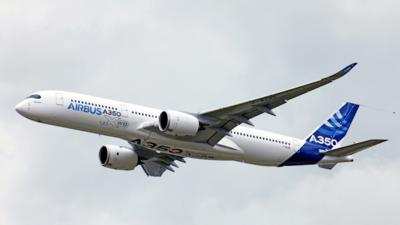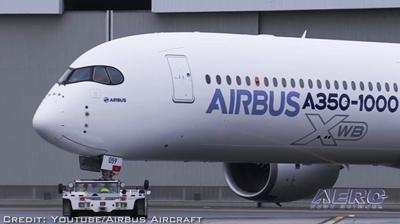Sun, Oct 17, 2021
AD 2021-20-04 Requires Revising The Existing Airplane Flight Manual
The FAA is adopting a new airworthiness directive (AD) for certain Airbus SAS Model A350-941 and -1041 airplanes. This AD was prompted by a report that during flight tests, the opening of the ram air outlet flaps was found to cause a disturbance of the air flow around the ram air turbine (RAT) when the landing gear (L/G) is extended.

This AD requires revising the existing airplane flight manual (AFM) and applicable corresponding operational procedures to provide procedures for all engines failure and L/G gravity extension related to certain software, and installing Airbus temporary quick change (ATQC) V3 for the flight warning system (FWS) software (SW) standard (STD) 6/2.0, as specified in a European Union Aviation Safety Agency (EASA) AD, which is incorporated by reference. The FAA is issuing this AD to address the unsafe condition on these products. This AD is effective November 17, 2021.
Supplementary Information: EASA, which is the Technical Agent for the Member States of the European Union, has issued EASA AD 2021-0061, dated March 5, 2021 (EASA AD 2021-0061) (also referred to as the MCAI), to correct an unsafe condition for certain Airbus SAS Model A350-941 and -1041 airplanes.
The FAA issued a notice of proposed rulemaking (NPRM) to amend 14 CFR part 39 by adding an AD that would apply to certain Airbus SAS Model A350-941 and -1041 airplanes. The NPRM published in the Federal Register on July 14, 2021 (86 FR 37087).

The NPRM was prompted by a report that during flight tests, the opening of the ram air outlet flaps was found to cause a disturbance of the air flow around the RAT when the L/G is extended. The NPRM proposed to require revising the existing AFM and applicable corresponding operational procedures to provide procedures for all engines failure and L/G gravity extension related to certain software, and installing ATQC V3 for the FWS SW STD 6/2.0, as specified in EASA AD 2021-0061.
The FAA is issuing this AD to address a non-negligible effect on the overall performance of the RAT in case of total engine flame out (TEFO) or electrical emergency configuration combined with the auxiliary power unit (APU) running, which could lead to partial or total loss of RAT electrical power generation when the RAT is deployed in an emergency condition with the landing gear extended, and possibly result in reduced control of the airplane. See the MCAI for additional background information.
More News
Aero Linx: International Federation of Airworthiness (IFA) We aim to be the most internationally respected independent authority on the subject of Airworthiness. IFA uniquely combi>[...]
Ultrahigh Frequency (UHF) The frequency band between 300 and 3,000 MHz. The bank of radio frequencies used for military air/ground voice communications. In some instances this may >[...]
A Few Questions AND Answers To Help You Get MORE Out of ANN! 1) I forgot my password. How do I find it? 1) Easy... click here and give us your e-mail address--we'll send it to you >[...]
From 2019 (YouTube Edition): Learning To Paint Without Getting Any On Your Hands PPG's Aerospace Coatings Academy is a tool designed to teach everything one needs to know about all>[...]
Also: Sustainable Aircraft Test Put Aside, More Falcon 9 Ops, Wyoming ANG Rescue, Oreo Cookie Into Orbit Joby Aviation has reason to celebrate, recently completing its first full t>[...]
 ANN's Daily Aero-Linx (05.06.25)
ANN's Daily Aero-Linx (05.06.25) ANN's Daily Aero-Term (05.06.25): Ultrahigh Frequency (UHF)
ANN's Daily Aero-Term (05.06.25): Ultrahigh Frequency (UHF) ANN FAQ: Q&A 101
ANN FAQ: Q&A 101 Classic Aero-TV: Virtual Reality Painting--PPG Leverages Technology for Training
Classic Aero-TV: Virtual Reality Painting--PPG Leverages Technology for Training Airborne 05.02.25: Joby Crewed Milestone, Diamond Club, Canadian Pilot Insurance
Airborne 05.02.25: Joby Crewed Milestone, Diamond Club, Canadian Pilot Insurance




